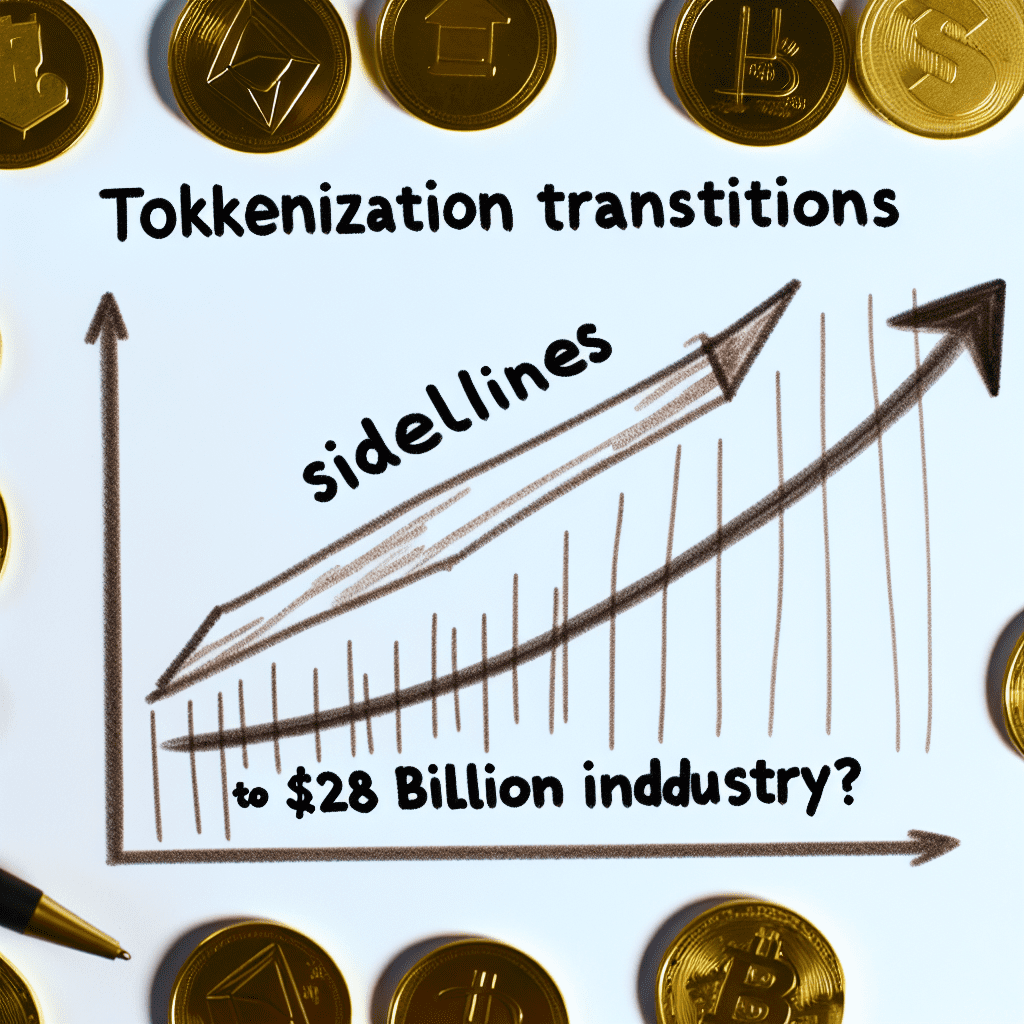Disclosure: The opinions and insights presented here are solely those of the author and do not reflect the views of crypto.news’ editorial team.
The tokenization of real-world assets has transitioned from a preliminary trial to a major financial reality. By late August 2025, tokenized assets on public blockchains exceeded $28 billion, with U.S. Treasuries alone accounting for over $6.6 billion in value. What started as niche projects has evolved into one of the most vibrant sectors of blockchain adoption.
Summary
- Tokenization is transitioning from theory to reality, digitizing asset classes like private equity, credit, and treasuries, enhancing transparency, settlement speed, and capital efficiency.
- Adoption is being driven by institutions and regulators, with Europe, Asia, and Brazil implementing supportive frameworks, and cautious progress in the U.S.
- Retail interest is growing, exemplified by platforms like Robinhood gearing up for tokenized stock trading.
- The upcoming phase hinges on trust, interoperability, and compliance-focused infrastructure—embedding safeguards to responsibly scale and unlock tokenization’s multi-trillion-dollar prospects.
The growth rate is remarkable. Tokenization not only enhances efficiency but also facilitates fractional ownership, quicker settlements, and greater transparency in markets that have long struggled with inefficiencies. These enhancements are tangible and actively shaping how institutions and investors allocate capital.
Institutional push and the evolution of infrastructure
Institutional momentum is vital for this transformation. From private equity to real estate debt and structured credit, some of the largest and least transparent asset classes are being tokenized. This occurs not just on general-purpose blockchains, but through infrastructure designed for compliance management, automating restrictions, and establishing robust standards for liquidity.
Major global banks are executing tokenized repo transactions worth billions, illustrating how tokenization mitigates counterparty risk and accelerates capital flows by reducing settlement periods from days to mere hours. Leading investment firms have commenced issuing tokenized bonds on private blockchains, while asset managers are exploring tokenized Treasury funds on public networks. These actions are not mere innovations; they are strategic steps aimed at lowering risk, broadening distribution, and alleviating friction in crucial financial markets.
For tokenization to scale into the trillions, it cannot depend on ad-hoc smart contracts that expose issuers to regulatory uncertainty. Foundational compliance and governance must be incorporated so that on-chain assets receive equal protections as their traditional counterparts. This approach is essential for sustaining institutional adoption without introducing new risks.
Policy and platforms are opening new doors
Regulatory frameworks are beginning to keep pace with innovation. In Europe, policymakers have underscored that tokenization is a priority, not a side endeavor. New initiatives under the DLT Pilot Regime and proposed measures within the Single Rulebook (SIU) are facilitating tokenized equities, bonds, and derivatives within defined legal frameworks.
The regulatory landscape is rapidly evolving in other regions as well. Singapore and Hong Kong have approved pilots for funds and structured products, while Brazil is advancing with tokenized dollar-denominated assets. Even in the U.S., where a cautious approach has predominated, progress is evident: the SEC is reviewing proposals to allow tokenized securities to trade on traditional exchanges. A fragmented global outlook poses challenges, yet it is clear that regulators are now regarding tokenization as an unavoidable market evolution rather than a mere experiment.
On the retail front, enthusiasm is growing. Robinhood has revealed intentions to establish a platform for tokenized U.S. stocks in Europe, potentially leveraging blockchain settlement powered by Arbitrum (ARB) or Solana (SOL). These developments suggest a future where everyday investors can access digital securities as seamlessly as they currently trade cryptocurrencies. Presently, tokenized equities represent a relatively small portion of the market, valued around 400 million dollars, in contrast to the tens of billions concentrated in treasuries and credit.
The future will be defined by trust and scale
While the figures are impressive, challenges persist. Global stock exchanges are urging regulators to closely examine tokenized equities, cautioning that many shares resembling traditional ones lack rights like voting or redemption. Liquidity remains inconsistent, with weak secondary markets for numerous tokenized products. These challenges highlight the necessity for tokenization to prioritize not just speed but also protections that build investor confidence and uphold market integrity.
Liquidity continues to be the major constraint. Tokenized treasuries are thriving, yet tokenized equities and credit products frequently see light trading in fragmented markets. Investors are reluctant to enter without sufficient scale, which hinders liquidity. Overcoming this cycle necessitates interoperability and established standards, fostering confident transactions across markets for issuers and investors alike. Similar to how equity markets depend on established clearing systems, tokenization will evolve when compliance and liquidity become built-in features rather than optional enhancements.
The road ahead
The next growth phase will necessitate a careful balance. Innovation must progress, but it cannot outpace regulatory frameworks or overlook investor protections. Compliance, governance, and identity need to be prioritized in infrastructure from the beginning, rather than as afterthoughts. Achieving this balance will allow tokenization to expand rapidly while transforming capital markets into a more efficient, transparent, and inclusive landscape.
The $28 billion milestone is merely a starting point, ushering in a new chapter. In the upcoming years, tokenization will reshape global market operations, and the entities that succeed will be those that combine the agility of blockchain with the discipline of traditional finance in a responsible manner.


